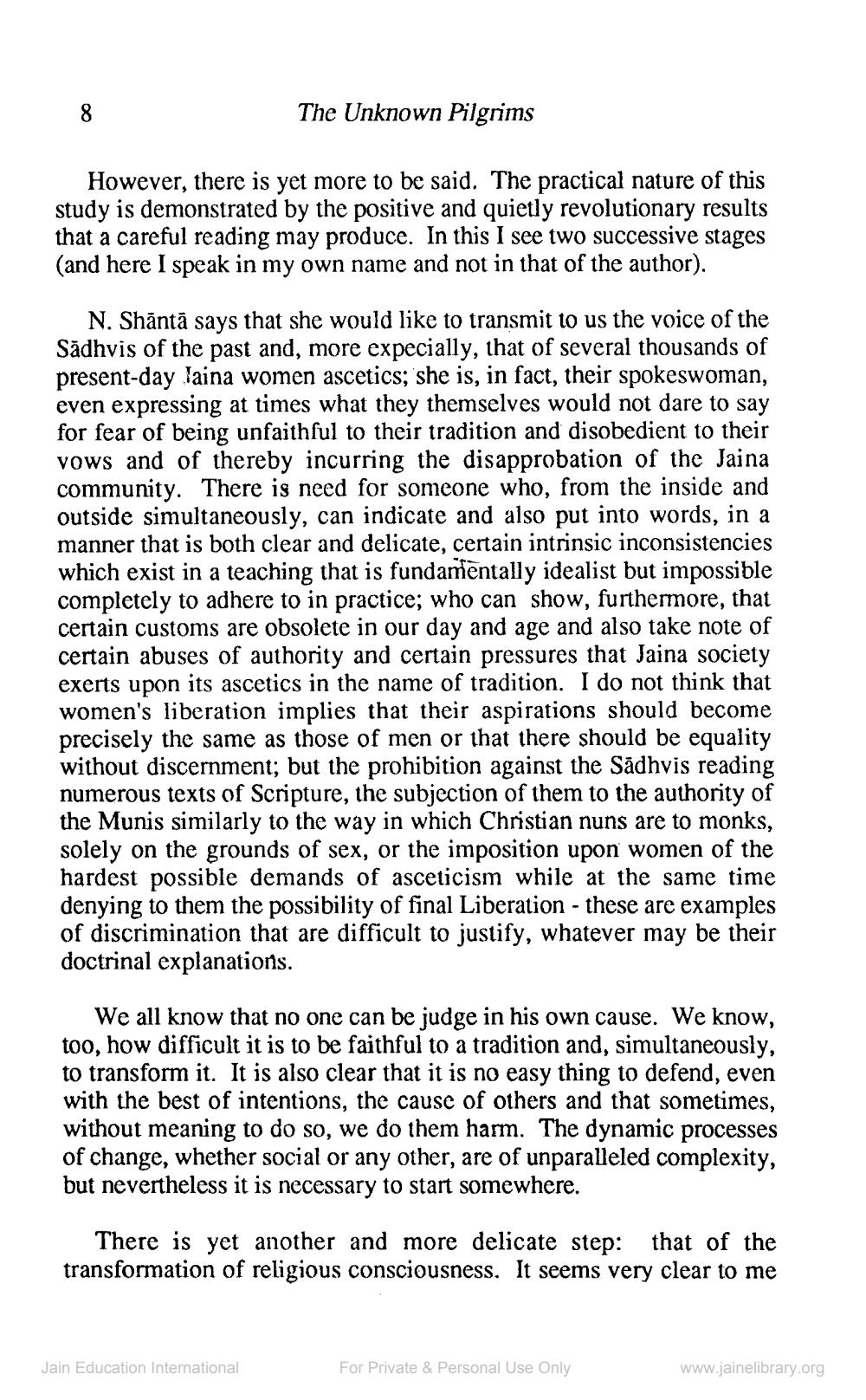________________
The Unknown Pilgrims
However, there is yet more to be said. The practical nature of this study is demonstrated by the positive and quietly revolutionary results that a careful reading may produce. In this I see two successive stages (and here I speak in my own name and not in that of the author).
N. Shāntā says that she would like to transmit to us the voice of the Sadhvis of the past and, more expecially, that of several thousands of present-day Taina women ascetics; she is, in fact, their spokeswoman, even expressing at times what they themselves would not dare to say for fear of being unfaithful to their tradition and disobedient to their vows and of thereby incurring the disapprobation of the Jaina community. There is need for someone who, from the inside and outside simultaneously, can indicate and also put into words, in a manner that is both clear and delicate, certain intrinsic inconsistencies which exist in a teaching that is fundamentally idealist but impossible completely to adhere to in practice; who can show, furthermore, that certain customs are obsolete in our day and age and also take note of certain abuses of authority and certain pressures that Jaina society exerts upon its ascetics in the name of tradition. I do not think that women's liberation implies that their aspirations should become precisely the same as those of men or that there should be equality without discernment; but the prohibition against the Sadhvis reading numerous texts of Scripture, the subjection of them to the authority of the Munis similarly to the way in which Christian nuns are to monks, solely on the grounds of sex, or the imposition upon women of the hardest possible demands of asceticism while at the same time denying to them the possibility of final Liberation - these are examples of discrimination that are difficult to justify, whatever may be their doctrinal explanations.
We all know that no one can be judge in his own cause. We know, too, how difficult it is to be faithful to a tradition and, simultaneously, to transform it. It is also clear that it is no easy thing to defend, even with the best of intentions, the cause of others and that sometimes, without meaning to do so, we do them harm. The dynamic processes of change, whether social or any other, are of unparalleled complexity, but nevertheless it is necessary to start somewhere.
There is yet another and more delicate step: that of the transformation of religious consciousness. It seems very clear to me
Jain Education International
For Private & Personal Use Only
www.jainelibrary.org




